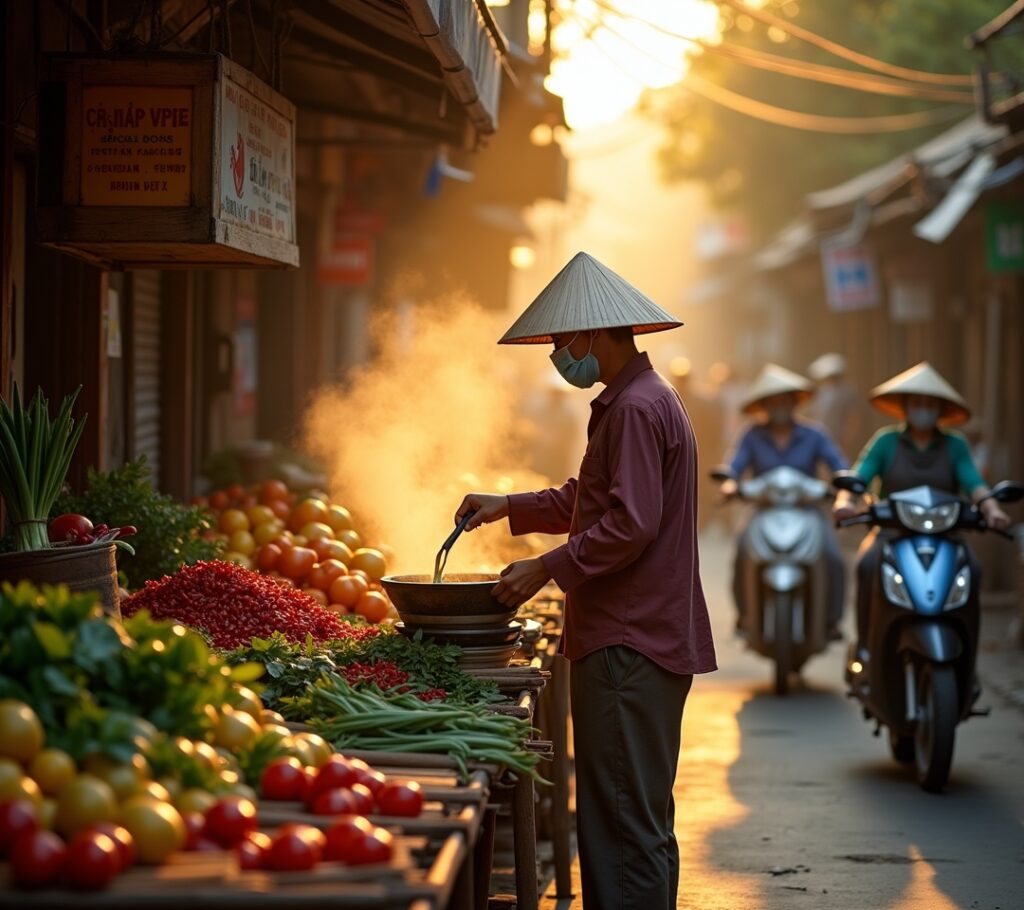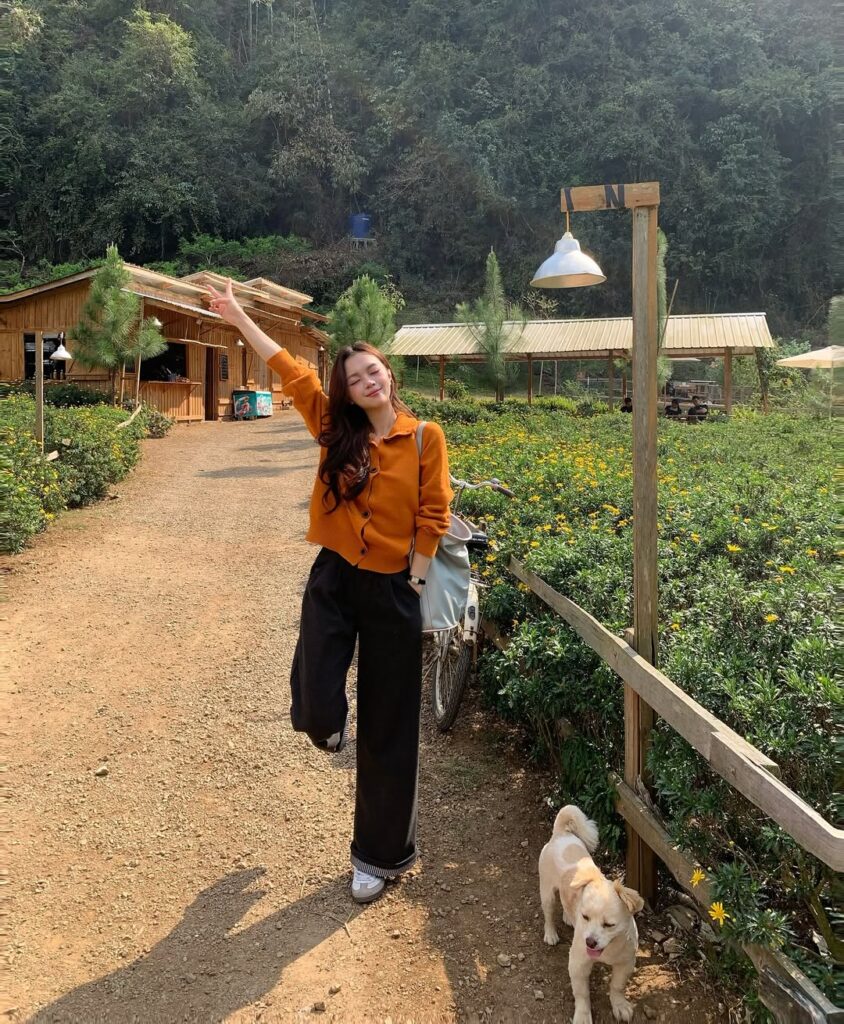Advertisements
You know what’s funny? I used to think Vietnamese food markets were just like any other grocery store – open when I needed them, closed when I didn’t care. Boy, was I wrong! After living in Vietnam for three years and making countless embarrassing mistakes, I learned that timing is absolutely everything when it comes to Vietnamese food markets.
Getting the timing right can mean the difference between scoring the freshest ingredients and staring at empty stalls. Trust me, I’ve been there – standing in front of closed vendors at 2 PM wondering where everyone went!
Early Bird Gets the Best Pho Ingredients

Here’s something I wish someone had told me on day one: Vietnamese markets come alive before the sun does. Most traditional wet markets open around 4:30 AM, and the best stuff is gone by 7 AM. I learned this the hard way when I strolled into Ben Thanh Market at 9 AM looking for fresh herbs for my pho experiment.
The vendors were already packing up their prime vegetables! Now I set my alarm for 5:30 AM when I’m serious about getting quality ingredients. The early morning atmosphere is incredible too – there’s this energy and hustle that you just don’t get later in the day.
The Midday Mystery: Where Did Everyone Go?
So picture this: it’s noon, I’m hungry, and I figured I’d grab some fresh ingredients for lunch. The market looked like a ghost town! This is when I discovered that many Vietnamese food vendors take a serious break during the hottest part of the day, usually from 11 AM to 2 PM.
It makes perfect sense when you think about it. Working in that heat with fresh food isn’t exactly ideal. Some vendors might stay open, but your selection will be pretty limited. I’ve made peace with this rhythm now – it’s actually kind of nice having a slower pace during lunch hours.
Evening Markets: A Different Beast Entirely
Evening markets are where the magic really happens for street food lovers. These bad boys usually fire up around 4 PM and go strong until 9 or 10 PM. The night markets are perfect for grabbing dinner ingredients or just wandering around with a beer.
I remember my first evening at a Saigon night market – the smells, the sounds, the organized chaos. It’s completely different from the morning rush. Everything moves at a more relaxed pace, and you can actually take time to chat with vendors without feeling like you’re holding up the line.
Weekend Warriors and Holiday Madness
Weekends are absolutely bonkers at Vietnamese markets. I learned to avoid Saturday mornings unless I enjoyed being squeezed between aunties fighting over the last bunch of morning glory. The crowds are intense, but the energy is infectious.
During Vietnamese holidays like Tet, forget everything I just told you. Markets operate on completely different schedules, and many vendors close for days. I got caught off guard during my first Tet celebration – spent three days eating instant noodles because I didn’t stock up beforehand. Not my finest moment, but hey, live and learn!
Regional Differences That’ll Surprise You
Northern markets like those in Hanoi tend to start even earlier than southern ones. I was shocked when I visited Dong Xuan Market and found vendors setting up at 3:30 AM! The cooler climate means they can operate longer hours too.
Coastal markets have their own rhythm based on when the fishing boats come in. Fresh seafood markets near the beach might have the best selection at times you wouldn’t expect. It’s worth asking locals about specific timing for the freshest catches.
Making Friends with Your Favorite Vendors
This might sound obvious, but building relationships with vendors changed my whole market experience. Once Mrs. Lan (my go-to herb lady) knew my routine, she’d save the best cilantro for me even when I showed up later than usual.
These relationships take time, but they’re worth it. Vietnamese vendors appreciate loyalty, and they’ll often give you tips about the best times to find specific ingredients. Plus, you might score some deals that tourists never see!
Your Market Timing Game Plan
Here’s what works for me now: I hit the wet markets early (5:30-7 AM) for fresh produce and meat, avoid the midday dead zone, and save evening markets for street food adventures. Weekends are for exploring new places, not serious shopping.
Remember, every market has its own personality and schedule. Don’t be afraid to ask vendors directly – most are happy to help once they see you’re genuinely interested in understanding their rhythm. And always bring cash – card payments are still pretty rare in traditional markets.
My Market Timing Adventure Continues
Understanding Vietnamese food market timing transformed my cooking and my connection to local culture. Sure, I still occasionally mess up the timing (like that time I showed up to a seafood market right after the lunch break), but that’s part of the adventure.
Every market experience teaches you something new about Vietnamese food culture and daily life. The timing might seem complicated at first, but once you get the hang of it, you’ll find yourself moving through markets like a local. Want to read more about navigating Vietnamese culture and food adventures? Check out more posts on Linkcheese – I’ve got plenty more stories and tips to share!



Pingback: How I Became an Awesome Vietnamese Food Influencer